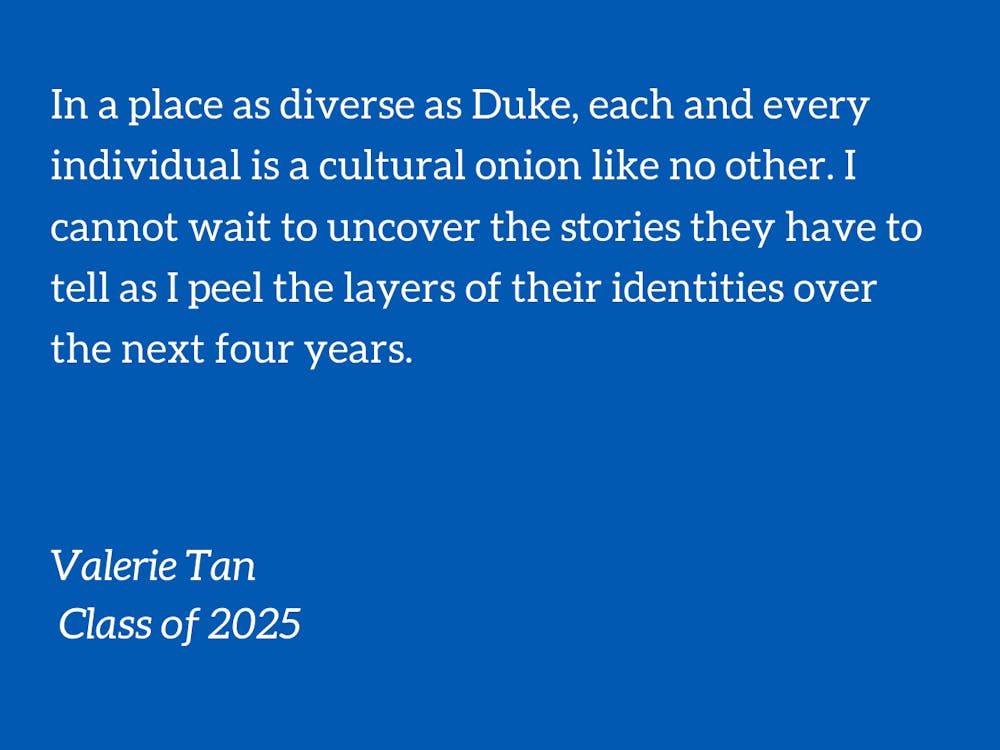Hailing from multiracial and multireligious Singapore, I am hardly a stranger to diversity. In the public housing estate I lived in, the concurrence of Chinese funerals and Malay weddings was not an unusual sight. Festivals like Chinese New Year, Deepavali and Hari Raya were never exclusive to any one racial group but celebrated collectively through a mutual exchange of greetings and delicacies. The sizable and ever-growing immigrant population has enriched the local food scene with manners of international cuisines from Korean and Italian to Caribbean and Nepalese, promoting awareness of their cultures among locals. With fluency in both English and Mandarin—the product of 10 years of institutionalized bilingual education that I once detested with a passion but am now immensely grateful to have undergone—I have had the versatility to traverse freely between Western and Asian cultures and acquaint myself with the values and norms that underpin them.
Emboldened by my pluralistic upbringing, I marched into Duke with the confidence that I was decently conversant in many cultures and well prepared to live and learn alongside peers who come from very different backgrounds.
Over the past couple of weeks, however, I have become acutely and abashedly cognizant of how narrow and shallow my cultural awareness really is. Growing up under the influence of American pop music, television shows and literature has definitely equipped me with some degree of familiarity with America—the perception of American culture I gained from media portrayals of it, however stereotypical, has manifested in many ways. But my experiences in Duke and the wider Durham community have enlightened me about how little I actually know.
My understanding of America, its history, heritage and way of life is now perpetually in a state of flux. Every day, the preconceived notions I harbored are being shaped and reshaped by little, seemingly mundane encounters: casual conversations at the dinner table outside Marketplace, inadvertent and inevitable eavesdropping while sandwiched between strangers on a teeming C1, fleeting interactions with floormates in the bathroom. I am getting the hang of colloquial humor and the cultural motifs upon which it is based and learning the hard way that some terms are laden with hidden connotations and need to be used with caution in certain contexts. But above all, I am increasingly coming to the realization that the notion of an overarching “American culture” is misleading, for it does not do justice to the plethora of regional, racial and religious subcultures that coexist in this shared space. These subcultures are distinct in their own right. They should not and cannot simply be reduced to a single, monolithic entity.
Coming to Duke has also made me more conscious of my Asianness, Chineseness and Singaporeanness all at once, aspects of my identity that were hardly remarkable back home (admittedly one of the manifestations of the “Chinese privilege” I enjoyed as a member of the majority ethnic group). For the first time in my life, I am surrounded mostly by people who are dissimilar to me. Being outnumbered means that others are less likely to understand where I come from and bridging this cultural gap demands strenuous social effort on my part. It requires me to be selective about the things I say, bearing in mind the cultural specificity of certain topics. Explaining Singapore’s culture to my American and international friends is challenging, partly because of its obscurity but largely because I find it hard myself to put into words what I experienced growing up as a Chinese person in Singapore, as I never questioned it—I never had to. I definitely feel more comfortable interacting with other Asians, for there is some mutual, unspoken understanding that arises from our cultural similarities. But the differences between us should not be downplayed. Though we speak the same tongue, my upbringing was very different from those of my Chinese friends who grew up in America. Disparities exist even amongst Chinese-Americans, with some retaining strong cultural and family ties to China and others identifying more strongly with Western values and traditions. Whenever I meet a fellow Chinese person, I have to suppress the tendency to make assumptions about them based solely on their ethnicity and test the waters to gauge whether or not it is appropriate to launch into an animated dialogue in Mandarin about the idiosyncratic traditions and parenting methods of Chinese families.
Assimilating into the Duke community is indeed presenting a steeper learning curve than I expected. But I knowingly and deliberately took on the challenge of adapting to an entirely new environment when I signed up for the American college experience on my own accord—and I have absolutely no regrets about my decision. In a place as diverse as Duke, each and every individual is a cultural onion like no other. I cannot wait to uncover the stories they have to tell as I peel the layers of their identities over the next four years.
Valerie Tan is a Pratt first-year. Her column runs on alternate Fridays.
Get The Chronicle straight to your inbox
Signup for our weekly newsletter. Cancel at any time.
Valerie Tan is a Pratt junior and an opinion managing editor of The Chronicle's 119th volume.

